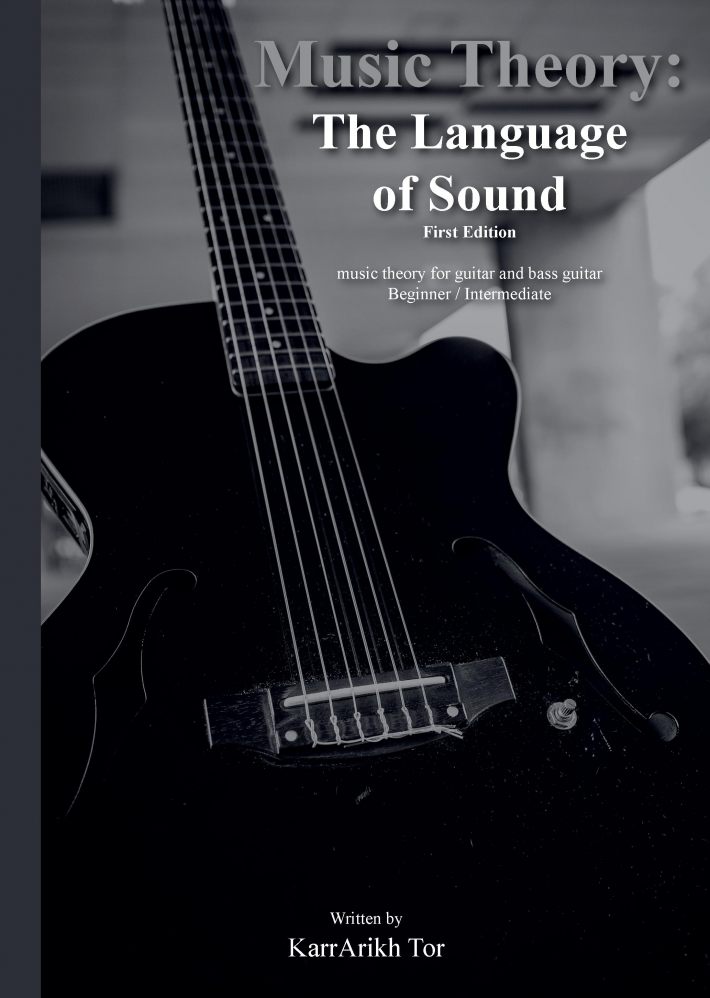Personen
Karrarikh Tor
Karrarikh Tor
NUR Codes (sub)
660 Muziek algemeen
Opera voor Dummies
Flamenco

Tired of fighting with your fellow band members because you don't understand each other's instruments? Music Theory: the Language of Sound demystifies guitar and bass in a straightforward, easy to read manner. Writer KarrArikh Tor explains: "Music theory is a common musical language for Western music traditions that musicians use to communicate musical ideas between instruments. In most cases, music theory is written from the piano, because it is easier to see chords and understand which notes are sharp or flat. Unfortunately, a guitarist or bassist can do little with this information, because they have no black and white keys and do not see chords in the same manner." The graphics in Music Theory: the Language of Sound tie the fretboards of the guitar and bass guitar to the keyboard and staves, making it a valuable tool not just for guitarists and bassists but for every member in a band. Learn how to easily find 'boxes' on the fretboard and play leads like a professional. Find out how to take your musical ideas and write it them onto paper so anyone can play along. See the patterns on the fretboards and learn the positions to play scales in any Key. Head out to the associated video channel and hear variations played while you read along with the sheet music. Chapter One explains the basic theory behind Western Musical Traditions, treating music theory like a language [Introduced in this chapter are: Octave divisions, Whole steps, Halfsteps, Accidentals, Clefs, Grand staff, Treble staff, Bass staff, Alto staff, Tenor staff, Time signature, Note types, Rests, Tempo]. Chapter Two shows where the natural notes on a piano are located on the guitar and bass guitar fretboards and on the Grand Staff [Introduced in this chapter are: Standard tuning, Tablature]. Chapter Three examines scales, particularly the Major Key scale, showing how we develop our scales from a tonic note, and where to find Major scales on the fretboards of guitars and bass guitars [Introduced in this chapter are: Ascending scale, Descending scale, Chromatic scale, Tonic note, Tonic scale names, Diatonic scales, Enharmonic Notes and Keys, Scale degrees, 15 Major Keys, Intervals]. Chapter Four defines chords, showing all the chords that can be built from a root note [Introduced in this chapter are: Chords, Note stacks, Triad chords (including Major, minor, diminished and augmented chords), Chord Qualities, Chord Inversions, Seventh chords (including Dominant, Major, minor-Major, minor, augmented, diminished, and half-diminished seventh chords), Suspended chords, Added note chords, Extended chords (including Ninth, Eleventh, and Thirteenth chords)]. Chapter Five continues from chapter four, defining and building chords naturally found in a Major Key scale [Introduced in this chapter are: Chords built from scale degrees (including all Major, minor, diminished, suspended, added note, and extended chords occurring naturally in a Major Key), Bar Chords for both guitar and bass guitar, Power Chords, how to use bar chords]. Chapter Six examines how to use the 15 Key Signatures and how modes are built from the Major Key scale [Included in this chapter are: 15 Major Keys, Key Signatures, Circle of Fifths, Circle of Fourths, Modes, Ionian mode, Dorian mode, Phrygian mode, Lydian mode, Mixolydian mode, Aeolian mode, Locrian mode, Natural minor Key, Harmonic minor Key, Melodic minor Key]. Chapter Seven examines additional notations that can be used on staves or in tablature [Introduced in this chapter are: Dynamic symbols (including Forte, Piano, Crescendo, Diminuendo, Fermata, Marcato, Sforzato, Tenuto, Portato, and Staccato), Octave shifts (using 8va, 8vb, 15ma, 15mb, 22ma, 22mb), Grace notes (Acciaccatura, and Appoggiatura), Tied notes, Slurs, Repeat measure symbol, Barlines, Brackets, Braces, Prima Volta, Seconda Volta, D.C. (Da Capo), D.S. (Dal Segno), Fine, Coda, Segno]. Chapter Eight examines adding chord arrangements to a melody, transposing songs, and working with modes in a chord arrangement. Chapter Nine examines naming chords, choosing between enharmonic chord names, and naming a group of notes as a chord. This book has it all, and will no doubt become the standard for guitarists, bassists, and band members everywhere.